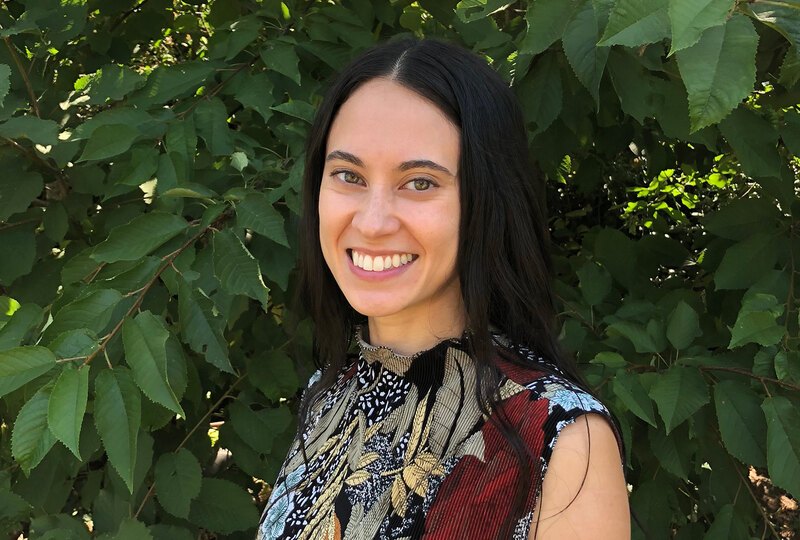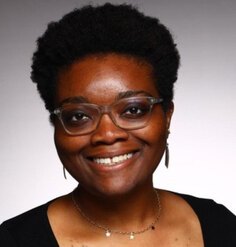Perspectives: Elizabeth Chong Baskerville

JULY 27, 2021
Elizabeth Chong Baskerville is a landscape designer in Seattle, Washington. She is a contractor with RainWise, Seattle’s green stormwater infrastructure rebate program. She serves as a board member for the International Special Review District, volunteers with the Danny Woo Community Garden, and is a NEW Economy Washington Frontline Community Fellow.
What drew you to landscape architecture?
I started my career in environmental justice education, but I was drawn to the discipline of landscape architecture when I partnered with an incredible landscape architecture PhD student named M’Lis Bartlett on an outdoor classroom design-build in Detroit. Watching teenagers transform their school grounds into a shared space of ownership and creativity demonstrated the thrill and fun of the community-based design process. Then I read Jeff Hou’s Insurgent Public Space: Guerrilla Urbanism and the Remaking of Contemporary Cities and really got drawn in.
Earlier, when I was in college, I took an Urban Redevelopment and Social Justice seminar taught by professor and architect James Chaffers. The course focused on Detroit’s history of redevelopment, but it was taught through poetry, personal storytelling, and these incredible diagrams. One particularly compelling diagram described two states: “What the American city is fast becoming: A concentric reflection of polarizing ‘fear-levels’ and isolating barriers, both real and imaginary” and “What the American city might ‘best’ become: a polycultural oasis of empowering systems where every citizen-resident is viewed as valuable and necessary.” I remember feeling something stir within me and I wrote “where do I fit in?” and how?” on the handout.
As a botany major, a Seattleite, and as biracial white/Asian American, I think my “where do I fit in” question had multiple layers. But asking this question led me to community organizing, which led me to community design, which led me to landscape architecture. Now I’ve found I “fit in” in my hometown of Seattle, in the Chinatown International District (C-ID), in the Danny Woo Community Garden, and as the newest member of the historic neighborhood design review board. I’m really enmeshed in the C-ID neighborhood and my community, which is the best place I think I could be as a landscape designer and design activist.
What is driving you professionally right now?
I am going an inch wide and a foot deep right now, place-based in the C-ID. I’m currently reading Building Tradition: Pan-Asian Seattle and Life in Residential Hotels by Dr. Marie Rose Wong and it’s a reminder that this neighborhood comes out of at least two hundred years of exclusion and racism perpetuated by politicians, businessmen, engineers, and planners. The tide flats were filled with garbage and fill from the hillsides that were sluiced to make way for railroads and real estate. Now the C-ID neighborhood is the epicenter of Seattle’s development boom, but on top of a history of Native American displacement, Chinese exclusion, Japanese internment, urban renewal, Black Power and Asian American activist movements. Now the community is dealing with displacement again, anti-Asian hate again, and still fighting for Black lives. There is a lot to recover from and to build upon. Last year I saw police tear gassing protesters, protesters smashing windows, windows being boarded up, and ultimately artists painting beautiful murals on those boards – all from my apartment. This neighborhood is the epitome of fortitude and it’s an honor to be connected to it.
I just finished building a dry creek and rain garden with teenagers in the Danny Woo Community Garden, which looks down on what was once a much larger Japantown. I'm excited to continue the neighborhood's historic and cultural preservation through the International District Special Review Board and hopefully increase neighborhood equity, health, and safety. I'm so thrilled to be doing the landscape design work I was inspired to do a decade ago in Detroit – now just a few blocks from where I went to middle school.
What challenges is landscape architecture allowing you to address right now?
I started a business and became a general contractor this year, designing and building rain gardens. It’s very interesting to be on the contractor side of things, coming from a comparatively hoity-toity design background, and it’s been very humbling. It’s not easy to run a business. It’s not easy to be a contractor. Landscaping and plumbing and digging and hardscaping is really tough work, but it’s even tougher in an industry where I don’t see myself represented as much.
I am currently working with two other women and BIPOC-identifying contractors to make recommendations on how local government can better support underrepresented contractors on green infrastructure projects. There is a lot of money that’s going to be spent supporting green jobs for people from frontline communities in the landscape and green infrastructure sectors. Labor groups, grassroots environmental justice organizations, and contractors not only need a seat at that decision-making table, but need to be leading this effort in order for it to be impactful.
What challenge would you give emerging leaders?
I challenge landscape architects to think more about who is not only going to benefit from their finished projects, but who is going to benefit from the projects’ construction stages. Where is the money spent on labor going? How can landscape architecture better embrace equity and anti-racism in green jobs? The mainstream environmental sector, which is traditionally white and wealthy and educated, needs to embrace the labor movement and the needs of working people who are literally going to be building a greener future. Through our research and interviews with contractors we are learning how important this is.
Where do you think the profession needs to go from here?
Landscape architects often prioritize imaginary end users, and go through the motions of diversity, equity, and inclusion processes for the communities we design for. But we cannot always control who the users are, especially when a project is built in a gentrifying area where demographics are quickly changing. Projects end up looking and feeling inauthentic, like when spaces visibly honor the people who don’t live or can’t afford to live or use that area anymore. I come across this all the time in Seattle, where, for example, I’ll see a red, black, and green sidewalk in a neighborhood park where African American homeownership has fallen over 50% since 1960. I’m glad that the park reminds of us the past, and it’s definitely important. But what about doing everything we can to honor the future?
I hope that the profession can focus on equity internally, within its own realm of control. This means diversity, equity, and inclusion in hiring and promotions. This means paying our workers living wages, paying students for design internships, and providing excellent benefits. This means thinking about equity when finding vendors and contractors. This work is invisible and equity over the bottom line is not often done without a fight in the private sector. But it’s just as important – if not more important – than designing for equity in our drawings.
LAF's Perspectives interview series showcases landscape architects from diverse backgrounds discussing how they came to the profession and where they see it heading. Any opinions expressed in this interview belong solely to the author. Their inclusion in this article does not reflect endorsement by LAF.











